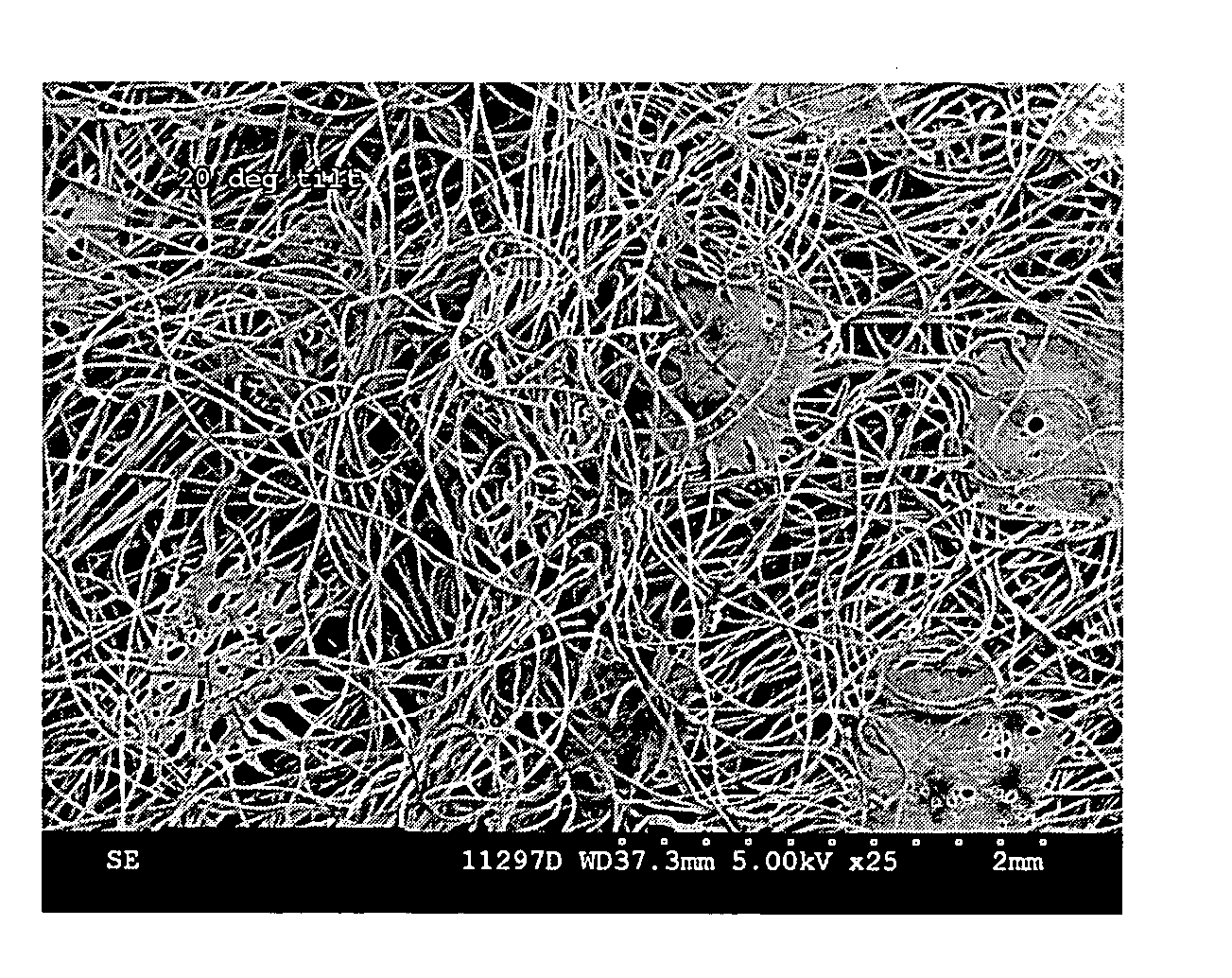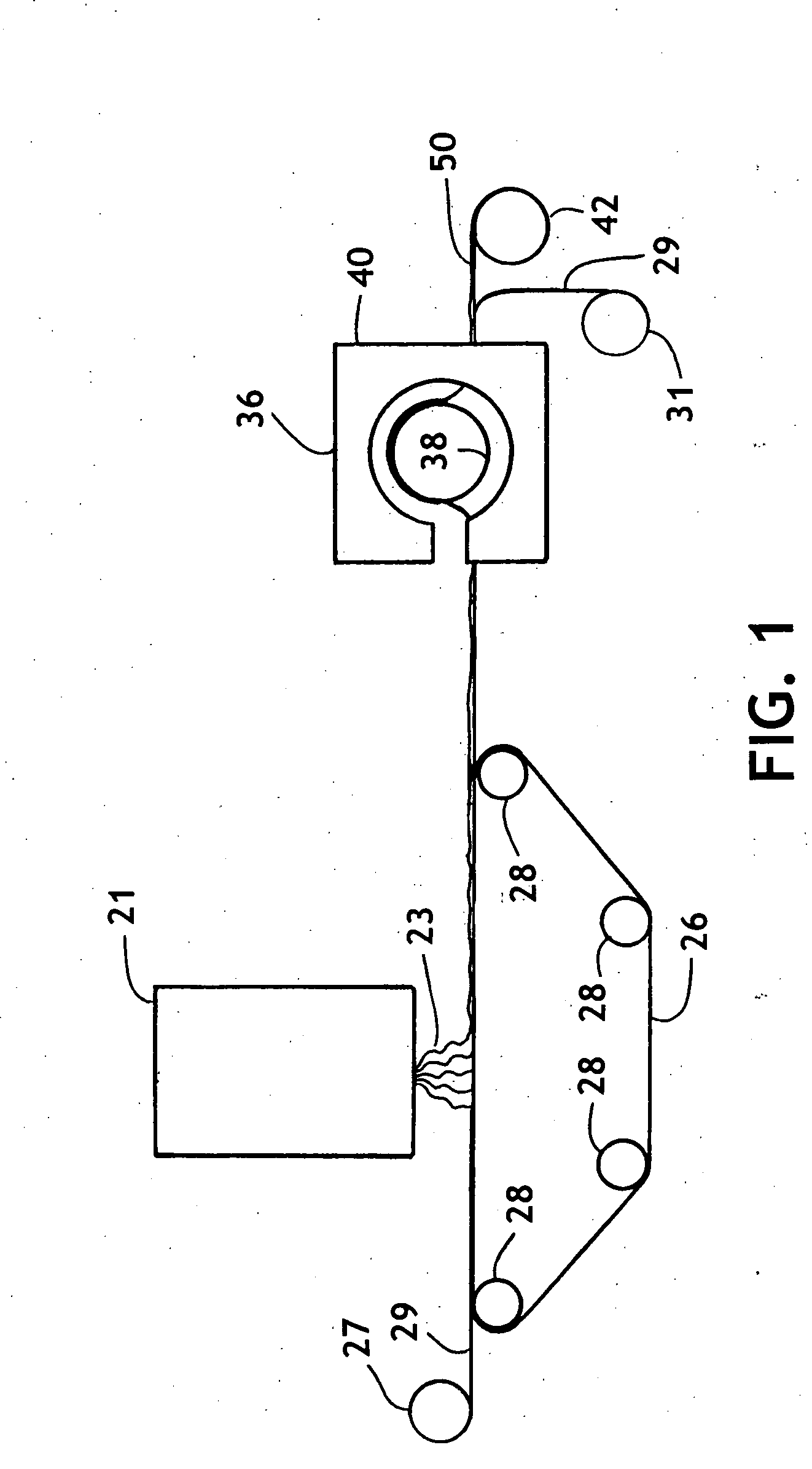Nonwoven fabric with abrasion resistance and reduced surface fuzziness
a nonwoven fabric, fuzziness reduction technology, applied in the field of nonwoven web or nonwoven web laminate, can solve the problems of inverse correlation between performance requirements and severely restricting throughput capacity and service life, and achieve the effect of improving fuzziness
- Summary
- Abstract
- Description
- Claims
- Application Information
AI Technical Summary
Benefits of technology
Problems solved by technology
Method used
Image
Examples
example 1
[0196] Using the process of FIG. 3, a 0.6 osy (20 gsm) polypropylene spunbond liner material was placed on the forming wire. Onto this spunbond liner, a laminate having a high density layer and a low density layer with an overall basis weight of about 5.4 osy (183 gsm) was prepared. The fibers of the high density, low loft layer were polyethylene / polypropylene side-by-side fibers containing about 1:1 weight ratio of polyethylene to polypropylene. The fibers were prepared by extruding about 0.7 grams per hole / min of the total polymer and the resulting fibers were quenched with air at 60° F. (15.5° C.) at about 5 inches (.The high density low loft layer had the fibers drawn at a FDU pressure of 6 psi and the HAK was set at 1 in (2.54 cm) above the formed web and had a temperature of 265° F. (129° C). The high density, low loft layer had a basis weight of about 2.7 osy (91.5 gsm) and a thickness of 0.9 mm.
[0197] Onto the high density, low loft layer, a low density, high loft layer was...
PUM
| Property | Measurement | Unit |
|---|---|---|
| Density | aaaaa | aaaaa |
| Density | aaaaa | aaaaa |
| Dimensionless property | aaaaa | aaaaa |
Abstract
Description
Claims
Application Information
 Login to View More
Login to View More - R&D
- Intellectual Property
- Life Sciences
- Materials
- Tech Scout
- Unparalleled Data Quality
- Higher Quality Content
- 60% Fewer Hallucinations
Browse by: Latest US Patents, China's latest patents, Technical Efficacy Thesaurus, Application Domain, Technology Topic, Popular Technical Reports.
© 2025 PatSnap. All rights reserved.Legal|Privacy policy|Modern Slavery Act Transparency Statement|Sitemap|About US| Contact US: help@patsnap.com



